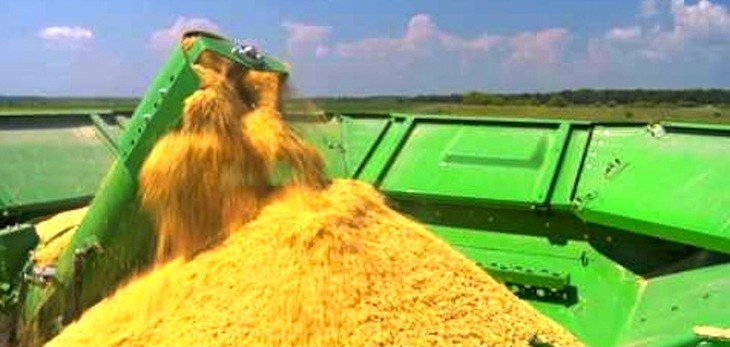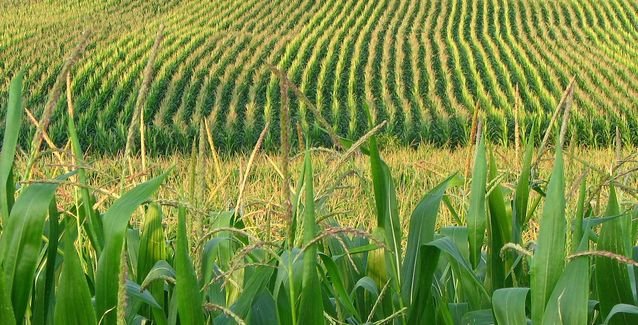The grant from the U.S. Department of Agriculture’s National Institute of Food and Agriculture will establish the Center for Scalable and Intelligent Automation in Poultry Processing. The center, led by the University of Arkansas System Division of Agriculture, will join researchers from five institutions in three states in efforts to adapt robotic automation to chicken meat processing.
Project director Jeyam Subbiah said the Arkansas Agricultural Experiment Station, the research arm of the Division of Agriculture, will receive $2.2 million from the grant primarily to focus on food safety automation for poultry processing plants. The grant is for four years.
Subbiah is a professor and head of the food science department for the Division of Agriculture and the Dale Bumpers College of Agricultural, Food and Life Sciences at the University of Arkansas.
The Georgia Institution of Technology, better known as Georgia Tech, is a major partner in the project, Subbiah said. $2.1 million of the grant will go to Georgia Tech to focus on automating the processing lines that turn chickens into meat.
The remaining grant money will be divided between Julia McQuillan, Willa Cather professor of sociology at the University of Nebraska-Lincoln, and Brou Kouakou, associate dean for research at Fort Valley State University in Georgia.
Jeff Buhr, a USDA Agricultural Research Service scientist, will contribute his expertise in broiler physiology to guide robotic deboning of meat, Subbiah said.
Georgia is the nation’s top broiler producer. Arkansas is number 3, according to 2021 figures from USDA.
Meeting the challenge
The recent impetus to automate chicken processing began with the COVID-19 pandemic, Subbiah said. The illness spread quickly among workers on the processing line. Since the worst of the pandemic, the poultry industry, like many others, has been having trouble hiring enough workers.
“Poultry processing lines began 70 to 80 years ago,” Subbiah said. “Since then, there have been only incremental changes in technology. Today, there’s a need for transformative change.”
Robotic hands are not adept at holding a chicken, he said. New technology is needed to prevent dropping slippery meats. Separating the carcasses into cuts of meat is also tricky.
“It’s hard enough to teach people how to use a knife with precision,” said Dongyi Wang, assistant professor of biological and agricultural engineering for the Arkansas Agricultural Experiment Station. “Robotics are fit for repetitive tasks but don’t do well with the precision needed to cut up chicken products.”
For example, he said humans could feel when a knife hits a bone. In contrast, existing automation in poultry processing, like deboners, wastes a lot of meat.
“Human deboners leave about 13 percent of meat on the bones,” Subbiah said. “Automated deboners leave 16 to 17 percent. On an industrial scale, that’s a significant loss in value. We will use artificial intelligence and virtual reality to improve precision and reduce wastage.”
Automation can relieve labor shortages, Subbiah said. It also allows plants to locate in rural areas with a smaller labor force but nearer poultry houses and with lower property costs.
Initially, people working remotely may help advance robotic processing. Subbiah envisions workers logging on from home with virtual-reality goggles and haptics gloves to control robots located miles away.
While working remotely, the labor force will teach artificial intelligence how to cut up chickens of varying sizes and shapes.
“Automated machines right now are programmed to debone or cut up chickens based on an average size and shape. But no chicken is that size or shape,” Subbiah said. “Robot-wielded knives cut meat poorly. The machines have to learn how to adjust to the reality of random sizes and shapes.”
Research team
Arkansas’ research will involve scientists from at least three departments:
Subbiah, Kristen Gibson and Philip Crandall from the department of food science — Gibson is also affiliated with the Center of Excellence for Poultry Science
Casey Owens and Tomi Obe from the department of poultry science and the Center of Excellence for Poultry Science
Dongyi Wang and Yanbin Li from biological and agricultural engineering — Wang also has an appointment in food science, and Li is affiliated with the Center of Excellence for Poultry Science
The primary focus of Arkansas Agricultural Experiment Station researchers will be to automate food safety practices. Subbiah said they will develop robots that monitor processing lines for pathogens like Salmonella and maintain clean and safe spaces and equipment.
Wang and Subbiah will also develop hyperspectral imaging to detect plastics in chicken meat, Subbiah said. Wang will also develop a mobile robot that is equipped with a biosensor invented by Li to produce a biological map of the facility. The “biomap” will be used to evaluate the efficacy of sanitation.
Where the biomap indicates potential hot spots, the robot will automatically collect swabs to test for bacteria. Gibson and Obe will analyze the biomap and develop strategies to enhance food safety.
Owens and Crandall will conduct outreach activities to extend new knowledge and technology to the industry.
Georgia Tech’s participating scientists are all faculty of the Georgia Tech Applied Research Corporation:
Doug Britton, manager of the Agricultural Technology Research Program
Colin Trevor Usher, senior research scientist and branch head of robotics systems and technology, Agricultural Technology Research Program
Ai-Ping Hu, principal research engineer, Agricultural Technology Research Program
Konrad Ahlin, research engineer, Intelligent Sustainable Technologies Division
Michael Park, research engineer, Intelligent Sustainable Technologies Division
Benjamin Joffe, research scientist, Intelligent Sustainable Technologies Division
Shreyes Melkote, the Morris M. Bryan, Jr. Professorship in Mechanical Engineering, associate director of the Georgia Tech Manufacturing Institute and executive director of the Novelis Innovation Hub
Collaborative research
“We are thrilled to partner with our colleagues here in the Division of Agriculture, as well as our colleagues at Georgia Tech and the other participating institutions on this exciting project,” said David Caldwell, head of the Division of Agriculture’s poultry science department and director of the Center of Excellence for Poultry Science.
“We expect the findings from these coordinated research projects will be impactful for our stakeholders in the commercial poultry industry here in Northwest Arkansas and throughout the entire industry,” Caldwell said. “This project will help keep moving technology forward in processing and food safety of poultry.”
Britton said his team was very excited to work on this project with the University of Arkansas System Division of Agriculture, Fort Valley State University, and the University of Nebraska-Lincoln.
“The ultimate goal is to drive transformational innovation into the poultry and meat processing industry through automation, robotics, AI, and VR technologies,” Britton said. “Building on years of work in the GTRI Agricultural Technology Research Program, we are pleased to see that the USDA-NIFA has chosen this team to continue these efforts.”
Hu said, “GTRI is excited to work on such an impactful project with our fellow institutions. The last few years have highlighted the need for new technological innovations in the meat and poultry production space, which we plan to address through robotics, virtual reality, and artificial intelligence.”
McQuillan, from the University of Nebraska-Lincoln, said it was exciting to be part of a multi-institutional team discovering innovative ways to improve poultry processing through automation. “As a social scientist who has studied work and health challenges and who is starting to work with extension faculty in Rural Prosperity Nebraska, this project provides great new opportunities,” she said.
McQuillan will study the effects of robotics on poultry industry laborers and how they perceive the technology.
“We hope eventually to bring new owner-operated businesses to rural areas,” McQuillan said. “Collaborating with food scientists, computer scientists, extension faculty and robotics engineers provides amazing opportunities to understand the meanings of innovations for entrepreneurs, workers, and other stakeholders, and to advance fundamental theories about science, technology, and society in sociology.”
Kouakou, from Fort Valley State University, will investigate the application of technology developed in this project to other meat processing industries. He said he was excited about working with this team of collaborators.
“Our state-of-the-art meat processing plant at the Georgia Small Ruminant Research and Extension Center on campus will serve as a resource to extend the technology developed by the Center for Scalable and Intelligent Automation in Poultry Processing to red meat species,” Kouakou said. “This research will greatly benefit our students and processors to observe artificial intelligence in meat processing.”
To learn more about Division of Agriculture research, visit the Arkansas Agricultural Experiment Station website: https://aaes.uada.edu/. Follow us on Twitter at @ArkAgResearch and on Instagram at @ArkAgResearch. To learn more about the Division of Agriculture, visit https://uada.edu/. Follow us on Twitter at @AgInArk.








